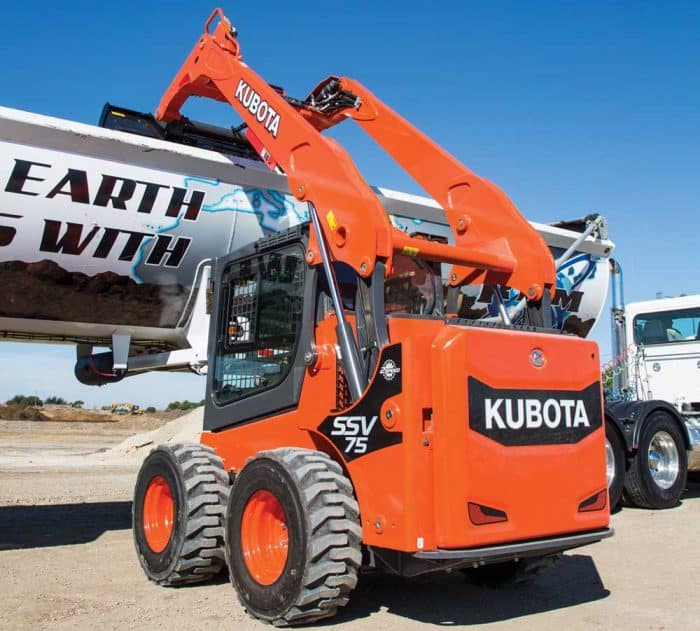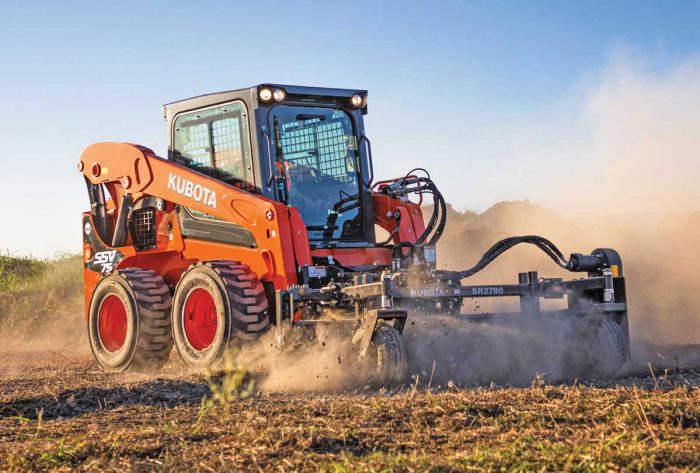Video: How Kubota Keeps Skid Steer Buying Simple with Two Models
In our latest Machine Heads interview, Compact Equipment’s Wayne Grayson talks with Jerry Corder of Kubota about the skid steer market in 2025 and Kubota’s approach to it. While many manufacturers offer broad lineups, Kubota keeps things simple — just two skid steer models that cover most contractor needs. Compact track loaders continue to dominate sales, but skid steers remain essential in many applications. They excel on hard, dry surfaces and in climates where tracked machines see less benefit. Skid steers also offer easier tire changes, lower undercarriage costs and faster travel speeds compared to many tracked units. For jobsites prioritizing maneuverability and versatility, they remain a solid choice.
Kubota’s Two-Model Strategy

Kubota entered the North American skid steer market in the mid-2010s. Instead of chasing every size class, the company chose to focus on two vertical-lift machines: the SSV65 and SSV75. The SSV65 is the smaller model at 64 hp. It has a rated operating capacity (ROC) of about 1,950 lbs and is lighter, making it easier to tow and gentler on finished surfaces. Landscapers, light construction crews and farmers often prefer it for its compact frame and balance of power and cost. The SSV75 steps up to 74 hp and an ROC around 2,690 lbs. That extra lift capacity and higher hydraulic flow make it better suited for demanding attachments like snow blowers or small cold planers. While it offers more muscle, it remains compact enough for tight spaces.
Key Features and Capabilities

Both models use vertical-lift loader arms, providing higher hinge pin heights and good reach for loading trucks. Standard two-speed travel allows quick movement around the jobsite. The SSV75 reaches up to 11.8 mph, while the SSV65 tops out around 11.1 mph. Kubota’s familiar diesel engines power both machines. Neither model requires DEF, though both include a diesel particulate filter with automatic regeneration. Hydraulic options include standard flow on both units and a high-flow package on the SSV75, pushing auxiliary flow up to about 30 gallons per minute (gpm). That upgrade allows operators to run more demanding hydraulic tools efficiently.
Maintenance and Operator Focus
Kubota designs the SSV series for straightforward service. A rear-mounted fuel tank frees space in the engine compartment for easier access to daily checkpoints. Heavy-duty doors, simple mechanical linkages in some controls and widely available parts help keep downtime low. Cabs are spacious with wide door openings. Options include enclosed cabs with heat and air, air-ride seats and adjustable control patterns. Operators can choose between H-pattern or ISO joystick controls depending on preference.
Choosing Between the SSV65 and SSV75

Contractors deciding between the two should evaluate lift and hydraulic needs. If most work involves general loading, light attachment use or jobs in confined areas, the SSV65 is often the better fit. For frequent snow removal, milling or other high-demand tasks, the SSV75’s extra horsepower and flow capacity provide a performance edge.
A Streamlined Choice
By offering only two models, Kubota makes it easier for buyers to match a skid steer to their work. Both the SSV65 and SSV75 deliver core performance without an overwhelming list of variants. For contractors already running Kubota machines, these skid steers share engines and service practices with other equipment, making them a natural addition to the fleet.
Keith Gribbins is publisher of Compact Equipment.
Come learn the dos and don’ts of trailering compact excavators.




